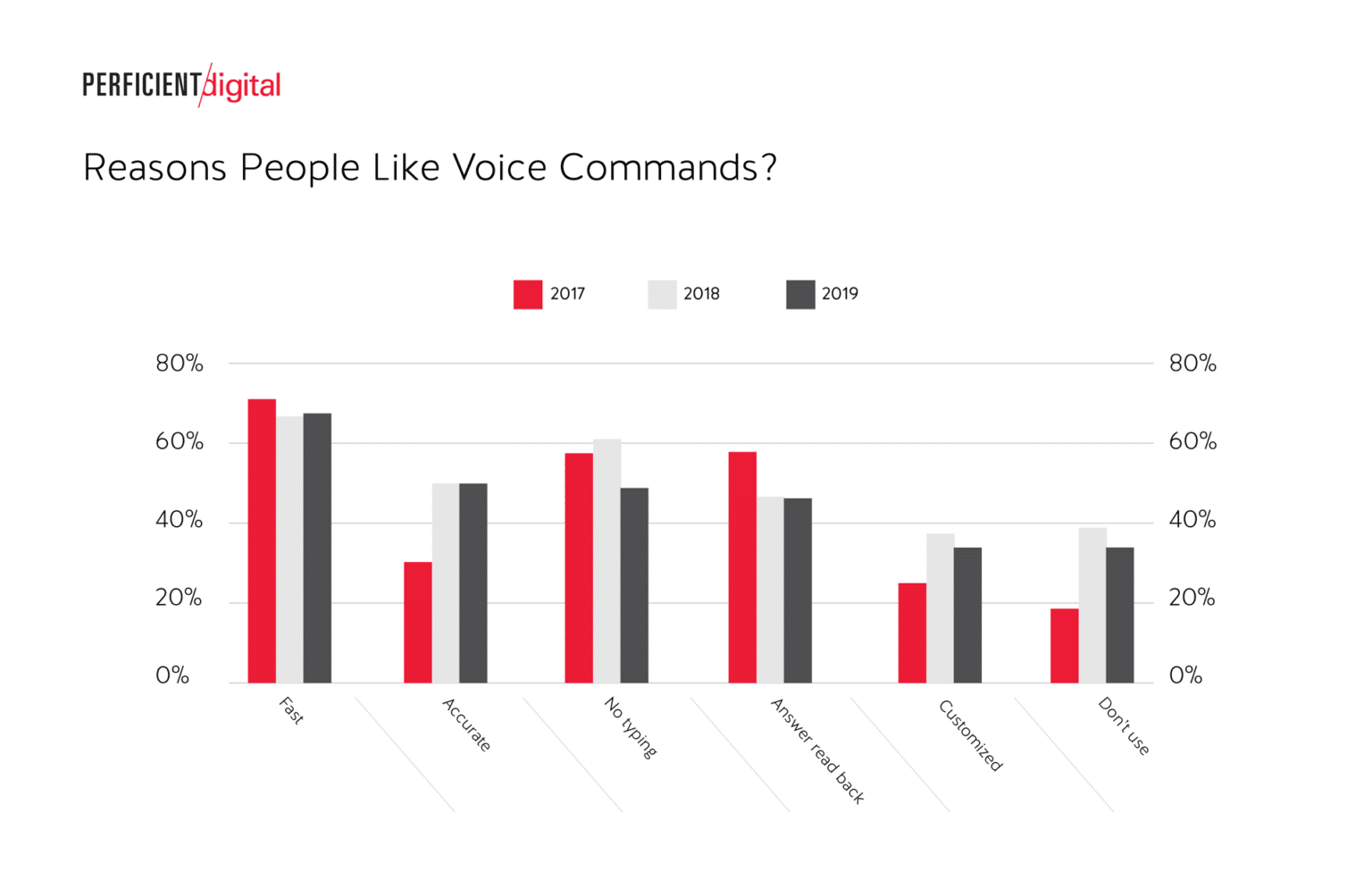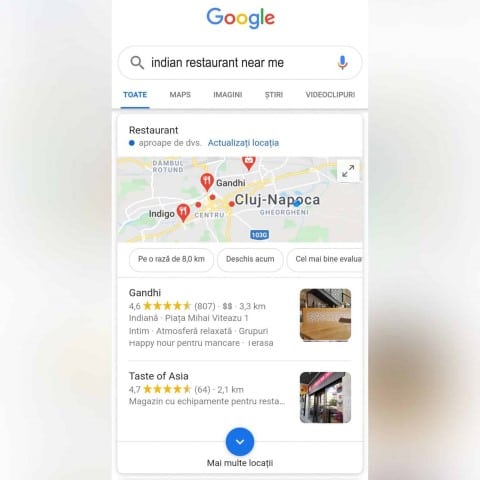Voice Search Optimization: How do we adapt SEO for voice search?
We are living in an era where Voice Search Optimization tools are gaining increasingly more ground. Online marketing specialists have begun to gradually change their optimization strategy, adapting SEO for voice search. With a growing number of users, this method of accessing search engines requires a number of changes in the way we formulate content, optimize pages and conduct Keyword Research.
These are the forecasts for the development of Voice Search in the following years:
How do voice search tools work?
To understand how a user relates to voice search, we must first discuss the way this works. Voice Search is more than just a voice recording tool. It is a system of continuously optimized dialogue by improving the algorithms. It is a function of the search engines that both Google as well as other platforms have worked hard at in recent years.
Any process of voice search involves two essential stages: automatic speech recognition (ASR), which transforms oral communication into coded impulses, and the response mechanism, which verbalizes information found in the digital environment – “text to speech”.
The ability of voice search tools to recognize a multitude of languages, accents or voices has developed over time and continues to do so. Starting from a simple function of the smartphone, the big companies have evolved to the point of creating special devices that receive messages and respond to commands. The ability to decipher the spoken language is constantly improving.
Why are more and more users adopting Voice Search?
Undoubtedly, when we talk about Voice Search, we are thinking, first and foremost, of a convenient way to search for information in the online environment. It is a software that gives a person the freedom to do two things at the same time, without stopping the activity he is undertaking. Specialists are even beginning to outline a new behavioral dimension, calling this category “lazy typers”.
A longitudinal study, conducted between 2017 and 2019, was able to identify the main arguments that users invoke regarding the adoption of a verbal interaction with their device.
Traditional search versus voice search
Digital Marketing enthusiasts understand that this field is constantly evolving. We, as specialists, need to constantly adapt our strategy whether we are talking about SEO, Social Media Marketing, Web Design, etc. Introducing voice commands and changing the user’s search behavior puts us in the face of a new challenge. How to adapt SEO so that it pays offin both casesof accessing a search engine?
We are dealing, first and foremost, with a diversification of keywords and an adaptation of them to the way of verbal expression. For example, a person will manually enter in the search engine “cherry pie recipe”, but they will say “Siri, find me the simplest cherry pie recipe” or “How do I make cherry pie?”. As we can see, the formulation changes radically.
In this case, what keywords do I choose?
- Long-tail keywords
If a keyword structure normally has 2-3 words, a long-tail keyword can reach up to 10 words. It is recommended that in the case of a classical search engine optimization we use such formulations. Even if the search volume is lower, the chances of taking a leading place in these words are higher (low competition).
We will target the “best Indian restaurant in Cluj”, not just “Indian restaurant Cluj”.
- Question keywords
Most of the time, the word search formulations are in the form of a question. That’s why, interrogative markers of the type what / where / when / how much are important items that we should include when creating SEO content. Another recommendation is to check the “People also ask” section of Google. It will help you identify the most popular questions your brand could answer.
- Filler words
Oral communication is dominated by connecting words (at, for, on, with, etc.), which are usually deleted by users when doing a written search. Thus, the classic “custard cake recipe” will become “recipe for custard cake”. To fit both styles, our recommendation is to combine the two formulations inside one text.
The main beneficiary? Local businesses
One of the most common structures used in Voice Search is “nearby” / “near me”. Therefore, we can easily deduce that the main beneficiary of this type of search is a local business (restaurant / hotel / workshop / cultural / medical institution, etc.). One of the essential conditions, however, is for that business to appear on the search engine map. Literally.
For example, Google has developed Google My Business, which allows businesses to register their physical store / location on Google Maps for free. Thus, when a user searches by voice, based on their location, the search engine provides a few results based on this factor – the proximity. To better understand, I did an experiment. I searched using Voice Search “which is the closest Indian restaurant”. Google recorded my current location (blue dot on the map) and provided me with a list of Indian restaurants that appeared on Google Maps. The distance between the 2 points (house – restaurant) is also mentioned here.
Our advice is to provide the application with a working schedule. This way, the potential customer will know when they can visit you. Also, ask those who pass your threshold to leave a recommendation. The order in which your business is indexed in that list, as you can see, also considers these elements.
What recommendations should you consider?
Here are some tips you should consider when adapting SEO content for voice search:
#1 Use current language when producing content. No complicated or unnatural expressions!
# 2 Include in the SEO strategy the targeting of long-tail keywords.
# 3 Optimize site speed. The search engine is looking for quick answers.
# 4 If you have a location, register it in Google My Business.
# 5 Make sure your site is mobile responsive. Most voice searches are done via smartphone.
Do you need help?
We understand that sometimes outsourcing a service is the safest strategy to develop a business to its full potential. SEO is quite a complex field, it takes time and effort, and experiments are not the safest way to do business. That is why we, the SEO 365 team, are more than happy to help you out.
Come to our free consulting session! Let’s discover together how we can adapt your business to current consumer trends. Sometimes, keeping up with the trend means generating more profit!













